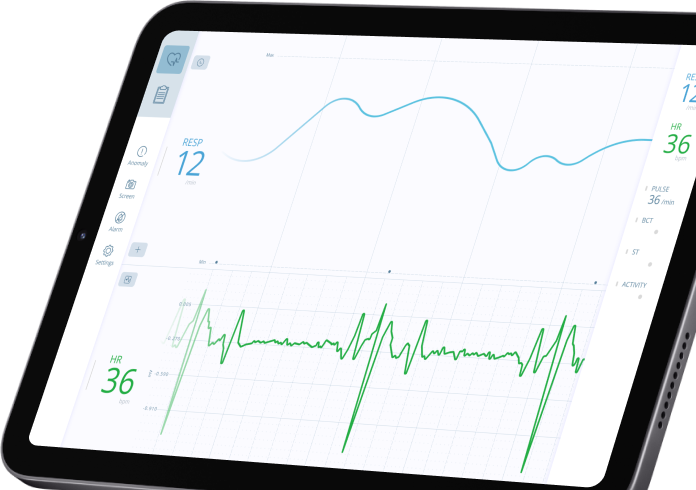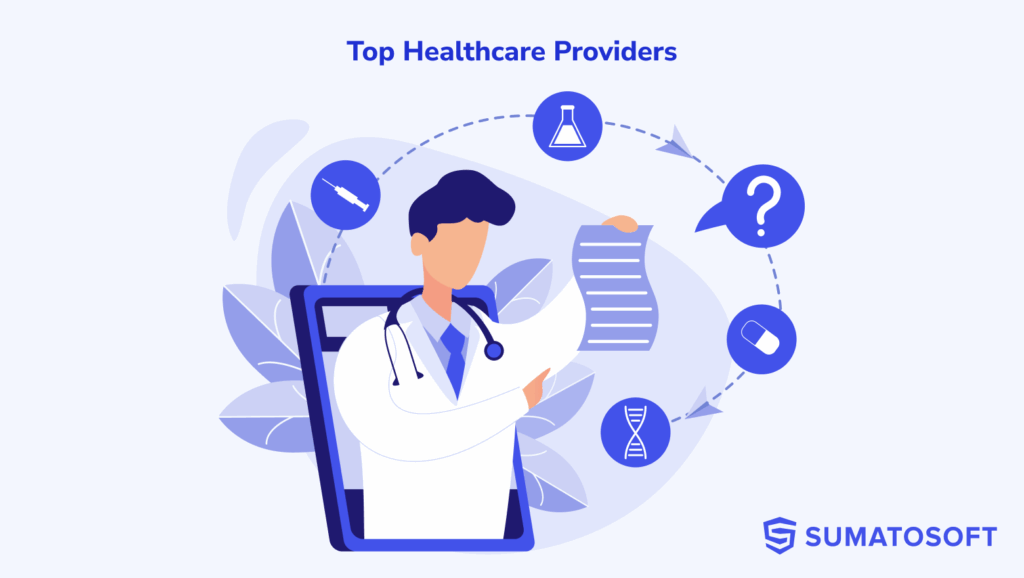IoT Development (IoMT) for Healthcare
SumatoSoft designs and implements IoT in healthcare: secure, HIPAA-compliant IoMT platforms for clinics and laboratories. We connect medical equipment and wearable sensors to apps and the cloud, develop RPM and smart hospital departments, support RTLS for assets, and integrate with EHR/EMR via HL7/FHIR and DICOM, eliminating manual intervention.
IoT implementation benefits in healthcare
Reduced operating costs
HL7/FHIR integration eliminates manual entry and duplicates in patient records. Errors and administrative time are reduced, and staff productivity increases.
Faster clinical decisions
Decisions are made faster thanks to real-time data and alerts. Early interventions significantly reduce hospitalizations and repeat visits.
Higher equipment availability
Telemetry analytics predicts breakdowns and plans services in advance of failure. RTLS increases asset utilization and eliminates equipment search waste.
Compliance and trust
Built-in HIPAA security, logging, and access control simplify audits and inspections. The risk of fines and breaches is reduced, and patient and partner trust is increased.
New revenue and scalability
RPM and telemedicine enable reimbursement through insurance plans and tariffs. Scaling is achieved without rapid hiring by automating clinic processes.
Staff efficiency
Automatic alerts and simple scenarios significantly reduce staff workload. Fewer clicks and routine tasks mean more time for patients and conversations.
IoT-powered healthcare solutions we build
Multipurpose remote health monitoring systems
These encompass a broad range of applications, from generic remote patient monitoring to specialized systems for post-operative care and elderly assistance. By capturing and transmitting patients’ health data to healthcare providers from non-clinical settings, we ensure continuous patient oversight without necessitating their presence in a healthcare facility.
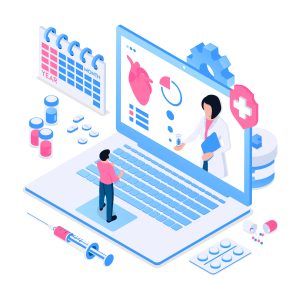
Personal health monitoring apps
A convergence of technology and personal health, these solutions include applications tailored for fitness trackers, smart bracelets, watches, and sleep monitors. We delve into specific health metrics, building apps that can measure heart rate, sleep cycles, blood oxygen levels, and more. We can design applications that train users for a marathon, assist in yoga, cater to swimmers, or monitor daily activities. Our apps are tailored to cater to a wide spectrum of physical endeavors, ensuring users always have insights into their health.
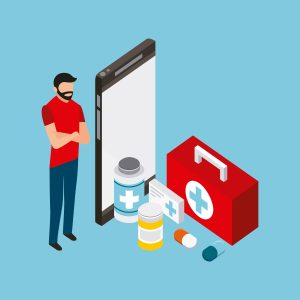
Telemedicine platforms
In essence, telemedicine replicates the physical clinic experience in a digital space. Patients can book appointments, consult with doctors through video calls, get prescriptions, and even have follow-up sessions. Beyond patient-doctor interactions, these platforms also serve as a hub for doctors to collaborate, share patient histories, and derive second opinions.

Chronic disease management platforms
Dealing with long-term conditions like diabetes or hypertension requires analysis of huge amounts of historical data since it’s a long-lasting disease. We develop platforms that offer real-time tracking as well as comprehensive and informative historical data representation. With analytical tools, patients and healthcare providers can view trends, derive insights from past data, and strategize treatments more effectively.
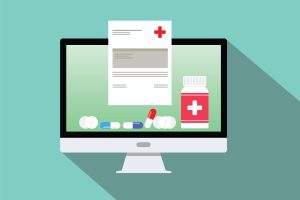
Medication adherence software
This solution type includes smart pill dispensers, smart insulin pens, and other devices that ensure patients never miss a dose. With features like automated reminders and real-time adherence tracking patients and healthcare providers stay informed and proactive. Patients get automated notifications to take medications in time while doctors remotely track the intake and can check the medication efficiency and adjust treatments or dosage.
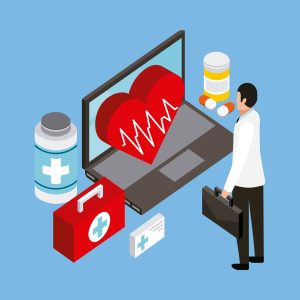
Home health automation systems
Think of a ‘smart home’, but with an emphasis on health. This is the most advanced solution that comprises multiple subsystems like telecommunication, patient billing, home visit scheduling, care planning, claim management, and interfaces for doctors, home care providers, and patients. Home health automation systems serve two purposes: optimizing healthcare staff workflow and ensuring meticulous remote patient monitoring.
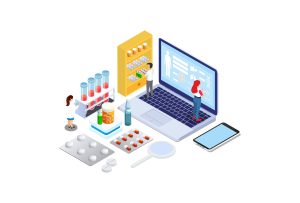
Healthcare IoT software development services we provide
End-to-end healthcare device prototyping and development
At SumatoSoft, we bridge the gap between ideas and tangible healthcare devices. Be it a fresh concept or an existing prototype needing fine-tuning, we’ve got you covered. Our expertise includes but isn’t limited to devices such as blood pressure cuffs, glucometers, heart rate monitor sensors, and pill dispensers.
We cover the following aspects:

Software development and device integration
We provide custom software development services that cater to both mobile and web platforms. Our software solutions are designed to flawlessly integrate with your healthcare devices, offering seamless bi-directional data transmission, secure data protocols, and cloud connectivity.

Security and testing audits
Ensuring data security in healthcare is critical and mandates adherence to stringent standards across different regions. From HIPAA in the U.S. to GDPR in Europe, our software aligns with key regulations, including FDA, HITRUST, HL7, DICOM, and ISO 13485. We rigorously test both software and devices to ensure the seamless and secure transfer and storage of user data.
Our approach incorporates:

All-in-one healthcare IoT partnership
With SumatoSoft, you don’t have to juggle between different agencies. We provide an integrated approach, ensuring your vision is realized cohesively, on time, and within budget. We position ourselves as your comprehensive partner, covering all stages of healthcare device development and guiding you from ideation to post-launch:
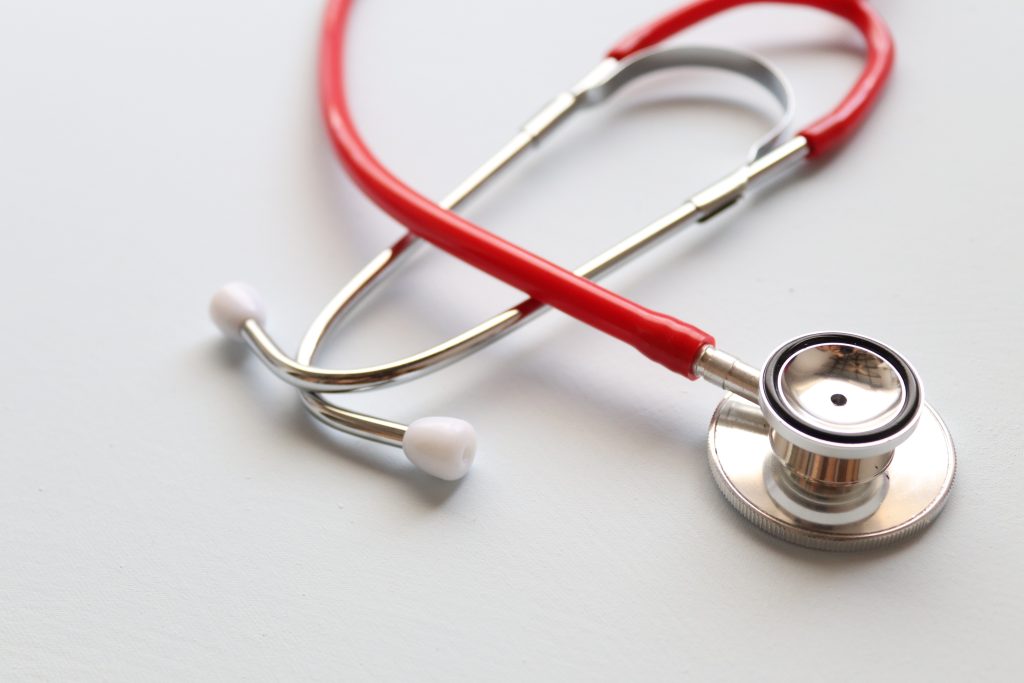
IoMT solutions we developed
IoMT architecture
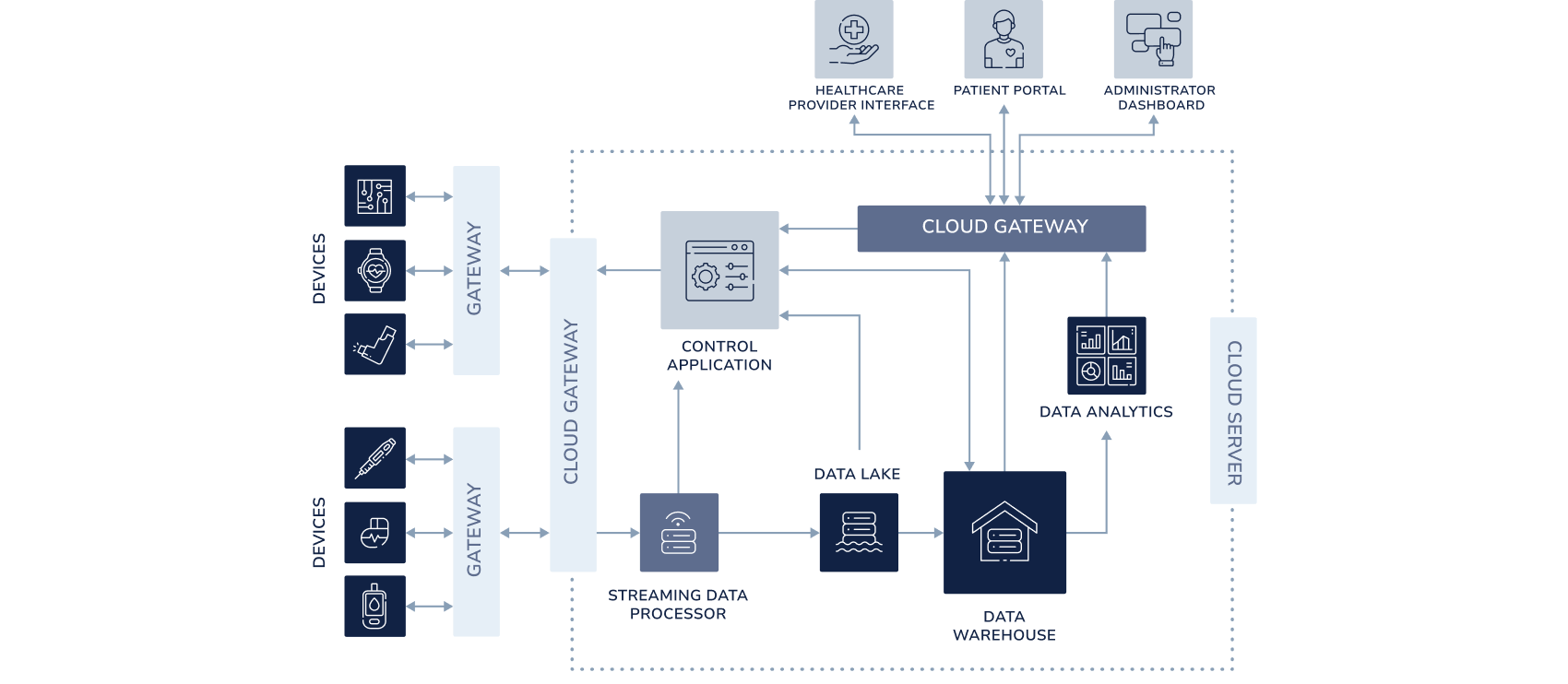
IoMT integrations that we handle
We integrate IoMT with key clinical and operational systems.
- EHR/EMR: HL7 v2 and FHIR R4: demographics, prescriptions, observations, results.
- Images: DICOM/PACS: routing, MWL, storage, viewers.
- Medical devices: Drivers and SDKs; BLE, MQTT, Serial, OPC UA via gateways.
- HIE and government services: ePrescription, vaccination registries, insurance clearinghouses.
- Telemedicine and RPM: Video, chats, scheduling; two-way data synchronization.
- Identification and access: SSO via SAML/OIDC, MFA; integration with AD/Azure AD.
- LIS/RIS/pharmacy: Orders and results; LOINC, SNOMED, NDC codes.
- Billing and payment: Coding, invoicing, clearing, ERP downloads.
- Data and clouds: AWS/Azure/GCP; streaming, storage, BI connectors.
- Alerts: SMS, email, push notifications; integration with nurse calls and pagers.
- Inventory and RTLS: ERP and WMS; asset, status, and location synchronization.
Healthcare IoT development timeline
Timeframes depend on volume, integrations, and regulatory requirements.
-
- Discovery and planning. 1–3 weeks. We conduct interviews and process analysis, identify risks and requirements, and create an integration plan.
- Architecture and security. 1–2 weeks. We define HL7/FHIR and DICOM flows, data models, and threats, and configure access policies.
- Pilot (PoC). 4–8 weeks. We connect devices, launch RPM or RTLS, and test hypotheses and target metrics.
- MVP. 8–12 weeks. We implement key scenarios, EHR/EMR integrations, dashboards, alerts, and basic analytics.
- Security. 2–4 weeks, in parallel. We implement logging and SIEM, encryption, RBAC, and conduct automated and manual tests.
- Validation and testing. 2–4 weeks. Load, integration, UX, and pentesting; we prepare artifacts for 21 CFR Part 11.
- Release preparation. 1–2 weeks. DHF/DMR, instructions, staff and administrator training, launch checklists.
- Launch and hyper-care. 2–4 weeks. We monitor metrics, resolve incidents, and refine rules and configurations.
- Scaling. According to the plan. We connect new branches and devices, expand reporting and automation.
Security and сompliance principles
We protect patient data and adhere to strict regulations from day one. We incorporate security into our architecture, code, and processes at every stage.
HIPAA and PHI
We comply with HIPAA requirements for applications, integrations, cloud infrastructure, and data processing by signing BAAs, restricting access to PHI, and logging actions.
Standards and processes
We develop in accordance with ISO 13485 and IEC 62304, and implement ISO 14971. We maintain a quality management system, ensure traceability of requirements, and manage changes in accordance with approved procedures.
Access control
We enable RBAC and the principle of least privilege in all environments by default. To ensure this, we configure MFA and SSO, conduct regular privilege reviews, and generate reports.
Encryption and network
We encrypt data at rest and in transit: AES-256, TLS 1.2+. To close open ports in accordance with policies, we use network segmentation, VPNs, and WAFs.
Device identification
At startup, we enable unique certificates, secure boot, and firmware verification. We sign OTA updates and securely protect keys in HSMs or gateways.
Logs and auditing
At all times, we maintain immutable event and access logs for all systems, forward events to SIEM, build dashboards, and create automated alert rules.
Vulnerabilities and testing
We run SAST and DAST in CI/CD, scan containers and images. In accordance with the plan and deadlines, we conduct pentests, model threats, and mitigate risks.
Incidents and continuity
We maintain an incident response plan with defined roles and detailed steps, including backing up data, testing recovery, and meeting RPO and RTO targets as scheduled.
Data and residency
We limit retention periods and automatically apply deletion policies for PHI. We select storage regions and fully support GDPR and local regulatory requirements.
Talk to our Healthcare IoT experts.
Find out more how your healthcare organization can benefit from IoT.
Collaboration models
Discovery sprint
1–3 weeks: goals, requirements, architecture, cost estimate, and pilot plan.
PoC / Pilot
Validation of RPM, RTLS, or integrations in a real environment with clear metrics.
Time & Materials
Flexible team based on tasks, billing based on actual work and hours.
Fixed price for a specific scope
We set a fixed scope, price, and milestones. Suitable for MVPs.
Discovery sprint
1–3 weeks: goals, requirements, architecture, cost estimate, and pilot plan.
PoC / Pilot
Validation of RPM, RTLS, or integrations in a real environment with clear metrics.
Time & Materials
Flexible team based on tasks, billing based on actual work and hours.
Fixed price
We set a fixed scope, price, and milestones. Suitable for MVPs.
FAQ
What is IoMT, and how is it different from IoT?
IoMT is the Internet of Medical Things, or IoT applied to healthcare. It connects devices, wearable sensors, and apps with clinical systems. Essentially, it’s an IoT branch.
What are the main IoT use cases in healthcare?
Remote patient monitoring (RPM) with real-time alerts, RTLS, and asset retrieval in the hospital, smart wards, therapy adherence, cold chain, and ICU telemetry.
Is healthcare IoT HIPAA-compliant, and how is data protected?
Yes, we design for HIPAA-compliant security from day one. We use RBAC, MFA, and data encryption at rest and in transit. We maintain logs, integrate SIEM, restrict access to PHI, and sign BAAs. We use certificates, secure boot, and OTA signing for devices.
How does IoT solve integrations with EHR/EMR (HL7/FHIR, DICOM)?
Data is mapped to HL7 v2 and FHIR resources and transmitted via interfaces. We support ADT, ORU, OBS, assignments, and observations without manual entry. Images are sent to PACS via DICOM: storage, MWL, and linking to the patient record. We monitor patient identifiers and exchange quality.
What is a “smart hospital” and how does IoT help?
It’s a hospital where data and sensors drive processes. IoT provides device telemetry, RTLS, environmental monitoring, and energy metering. We speed up patient flows, reduce downtime, and improve safety.
Why Clients cooperate with us in IoMT
- Focus on IoMT and medicine – We create healthcare IoT, RPM, and smart solutions for clinics.
- Compliance from day one – HIPAA, ISO 13485, IEC 62304, FDA 21 CFR Part 11.
- Deep integrations – HL7/FHIR, DICOM/PACS, EHR/EMR, HIE, and insurance clearing.
- Secure architecture – RBAC, MFA, encryption, network segmentation, SIEM, and auditing.
- Transparent development – Open repository, CI/CD, weekly demos, and metrics.
- Predictable delivery – Milestones with acceptance criteria, risk and deadline management.
- Reliable support – SLA, SRE practices, monitoring, OTA updates, and incident runbook.
- Powerful roles – Business analysts, integration engineers, and QA engineers for medical standards.

Quick facts about SumatoSoft
Awards & Recognitions
Let’s start
If you have any questions, email us info@sumatosoft.com



